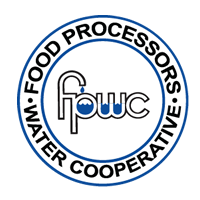Important Information on How to Protect Your Health
Lead is a common metal that has been in many consumer products but is now known to be harmful to human health if ingested or inhaled. It can be found in lead-based paint, air, soil, household dust, food, some types of pottery, and drinking water. Lead is rarely found in natural sources of water such as rivers, lakes, wells or springs.
What Are The Health Effects of Lead?
When people come in contact with lead, it may enter their bodies and accumulate over time, resulting in damage to the brain and kidneys, and can interfere with the production of red blood cells that carry oxygen to all parts of your body. The greatest risk of lead exposure is to infants, young children, and pregnant women. Lead in water can be a special problem for infants, whose diets may be mostly liquids, such as baby formulas or concentrated juices mixed with water. Smaller bodies can absorb lead more rapidly than bigger ones, so amounts of lead that won’t hurt an adult can be very harmful to a child and scientists have linked the effects of lead on the brain with lowered IQ in children. During pregnancy, the child receives lead from the mother’s bones, which may affect brain development. Adults who drink this water over many years could develop kidney problems or high blood pressure.
What Are The Sources of Lead?
The primary sources of lead exposure for most children are deteriorating lead-based paint, lead-contaminated dust, and lead-contaminated residential soil. Exposure to lead is a significant health concern, especially for young children and infants whose growing bodies tend to absorb more lead than the average adult. If you are concerned about lead exposure, parents should ask their health care providers about testing children for high levels of lead in the blood.
What Can I Do To Reduce Exposure to Lead in Drinking Water?
Lead may work its way into drinking water after the water entered the distribution system and is on its way to consumers taps. This usually happens through the corrosion of materials containing lead in household plumbing. These materials include brass faucets, lead solder on copper pipes, lead pipes, or lead service lines connecting the water main to the inside plumbing. Lead pipes are no longer installed for service lines or in household plumbing and lead solder has been outlawed in Virginia since 1985.
There are several steps you can take to reduce your exposure to lead in drinking water. These include:
- Run your water to flush out lead. If water hasn’t been used for several hours, allow the water to run at the tap for 15-30 seconds or until it becomes cold or reaches a steady temperature before using it for drinking or cooking. This flushes lead-containing water from the pipes. The water you run from drinking water taps does not have to be wasted. You can use this water for cleaning purposes or for watering plants. You may want to keep a container of drinking water in your refrigerator, so you don’t have to run water every time you need it.
- Use cold water for cooking and preparing baby formula. Do not cook with or drink water from the hot water tap as lead dissolves more easily into hot water. Do not use water from the hot water tap to make baby formula.
- Do not boil water to remove lead. Boiling water will not reduce lead.
- Look for alternative sources or treatment of water. You may want to consider purchasing bottled water or a water filter. Read the package to be sure the filter is approved to reduce lead or contact the National Sanitation Foundation at 800-NSF-8010 or www.nsf.org for information on performance standards for water filters. If you choose to install a lead removal filter, be sure to maintain and replace a filter device in accordance with the manufacturer’s instructions to protect water quality.
- Get your child tested. Contact your local health department or healthcare provider to find out how you can get your child tested for lead if you are concerned about exposure.
- Identify if your plumbing fixtures contain lead. New brass faucets, fittings, and valves, including those advertised as “lead-free,” may contribute lead to drinking water. The law currently allows end-use brass fixtures, such as faucets, with up to 8% lead to be labeled as “lead free.” Visit the National Sanitation Foundation Web site at www.nsf.org to learn more about lead-containing plumbing fixtures.
For More Information
Call us at 540-896-9161. For more information on reducing lead exposure around your home and the health effects of lead, visit EPA’s web site at www.epa.gov/lead, call the National Lead Information Center at 800-424-LEAD, or contact your health care provider.
